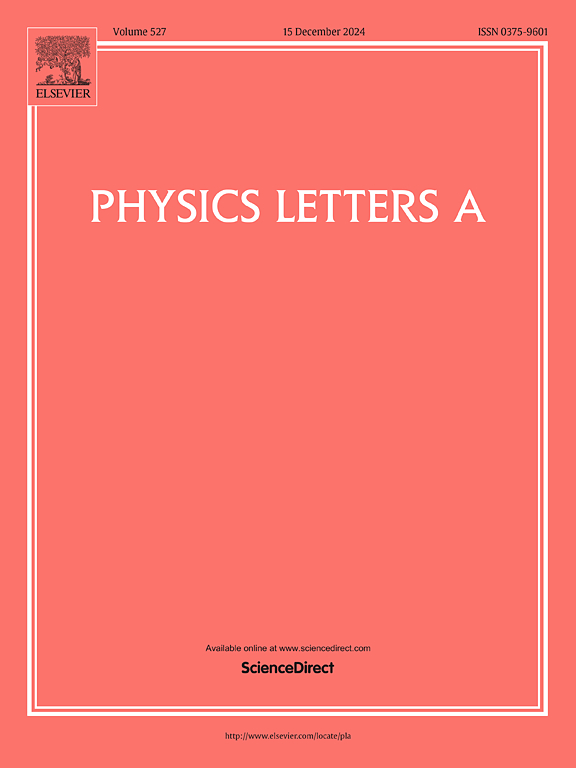Exploring structural, optoelectronic, and thermo-phononic properties of AcClO using DFT and AIMD
IF 2.3
3区 物理与天体物理
Q2 PHYSICS, MULTIDISCIPLINARY
引用次数: 0
Abstract
In this study, we present a comprehensive first-principles investigation into the structural, thermal, phononic, electronic, and optical properties of Actinium Oxychloride (AcClO). AcClO is a Matlockite-structured material containing a 5f radioactive element (Ac). Using four computational codes — CASTEP for density functional theory (DFT), Quantum Espresso for ab initio molecular dynamics (AIMD), Phonopy for phonon and heat capacity, and Phono3py for thermal conductivity and group velocity — we confirmed the energetic, dynamic, mechanical, and thermal stability of AcClO, through calculations of the formation energy, phonon dispersion, elastic constants, and AIMD simulations, respectively. Furthermore, bonding analysis through electron localization function (ELF) shows that AcClO is an ionic compound. Band structure (including the hybrid HSE06 functional), partial density of states (PDOS), and spin-polarized total DOS show that AcClO is a wide band gap and non-magnetic semiconductor. The heat capacity, entropy, and phonon PDOS analyses provide insights into the vibrational dynamics of AcClO, revealing interplay of atomic vibrations between the heavy Ac atoms and lighter O atoms. In computations of the complex dielectric function, refractive index and optical conductivity, we find that AcClO exhibits a high static dielectric constant and collective plasmons in the far ultraviolet spectrum. Bearing in mind the radioactive nature of AcClO, along with its predicted low lattice thermal conductivity, wide band gap, and high dielectric constant, it could be used for applications such as deep-sea thermal insulation devices and space UV-sensor housings. This first theoretical exploration of AcClO marks a significant contribution to the understanding of Matlockite-type structures and actinide-based oxychlorides.
利用DFT和AIMD研究AcClO的结构、光电和热声子性质
在这项研究中,我们对氧氯化锕(AcClO)的结构、热、声子、电子和光学性质进行了全面的第一性原理研究。AcClO是一种含有5f放射性元素(Ac)的matlockite结构材料。利用密度泛函理论(DFT)的CASTEP、从头算分子动力学(AIMD)的Quantum Espresso、声子和热容的Phonopy以及导热率和群速度的Phono3py四个计算代码,我们分别通过计算形成能、声子色散、弹性常数和AIMD模拟,证实了AcClO的能量、动力学、力学和热稳定性。此外,通过电子定位函数(ELF)的成键分析表明,AcClO是一种离子化合物。带结构(包括杂化HSE06泛函)、偏态密度(PDOS)和自旋极化总态密度表明AcClO是一种宽带隙非磁性半导体。热容、熵和声子PDOS分析为AcClO的振动动力学提供了见解,揭示了重Ac原子和轻O原子之间的原子振动相互作用。在复介电函数、折射率和光电导率的计算中,我们发现AcClO具有较高的静态介电常数和远紫外光谱中的集体等离子体。考虑到AcClO的放射性,以及其预测的低晶格导热系数、宽带隙和高介电常数,它可以用于深海隔热装置和空间紫外线传感器外壳等应用。这是AcClO的首次理论探索,标志着对matlockite型结构和锕系氧氯化物的理解做出了重大贡献。
本文章由计算机程序翻译,如有差异,请以英文原文为准。
求助全文
约1分钟内获得全文
求助全文
来源期刊

Physics Letters A
物理-物理:综合
CiteScore
5.10
自引率
3.80%
发文量
493
审稿时长
30 days
期刊介绍:
Physics Letters A offers an exciting publication outlet for novel and frontier physics. It encourages the submission of new research on: condensed matter physics, theoretical physics, nonlinear science, statistical physics, mathematical and computational physics, general and cross-disciplinary physics (including foundations), atomic, molecular and cluster physics, plasma and fluid physics, optical physics, biological physics and nanoscience. No articles on High Energy and Nuclear Physics are published in Physics Letters A. The journal''s high standard and wide dissemination ensures a broad readership amongst the physics community. Rapid publication times and flexible length restrictions give Physics Letters A the edge over other journals in the field.
 求助内容:
求助内容: 应助结果提醒方式:
应助结果提醒方式:


